
THE ULTIMATE BIRTHSTONE GUIDES
Discover the gemstones of your birth month with the Ultimate Birthstone Guides! From January to December, uncover the knowledge of your modern and traditional birthstones that you probably never knew existed.

The Birthstones Of October: Opal and Tourmaline
There’s much to celebrate in the month of October, especially for those October babies having two birthstones! The birthstones of October are Opals and Tourmalines, which represent both passion and compassion, respectively. October is one of the months with both modern and traditional birthstone representations. Continue to learn more about the symbolism, history, and features of the Opal and Tourmaline gemstones!
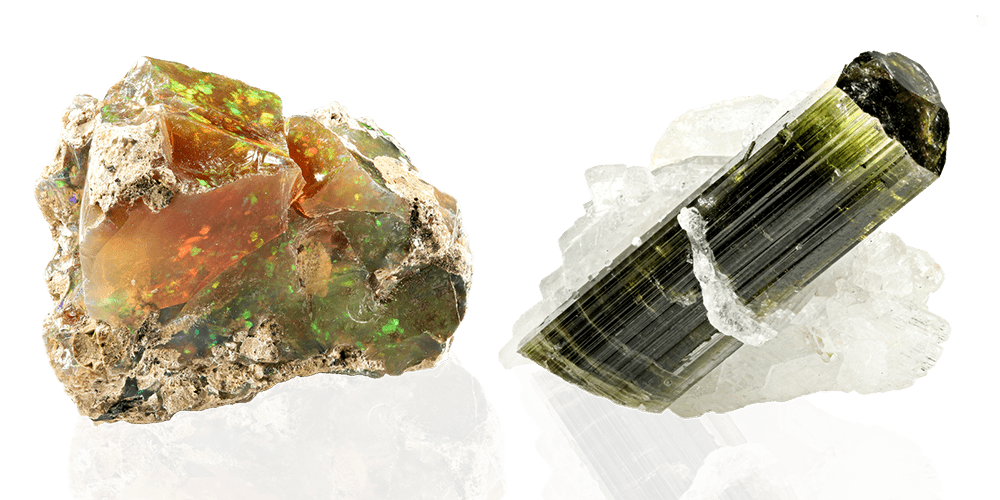

Opal and Tourmaline, Chosen for October
Why does October have two birthstones?
Throughout history, October has been associated with two specific birthstones: Opals and Tourmalines. The months of the year vary in the number of birthstones they have; some months feature only one birthstone, while others boast up to three gemstones associated with them.
The discrepancy in the number of birthstones per month arises from the classification of gemstones as either modern or traditional. Modern birthstones, the more prevalent of the two categories, were officially designated by the Jewelers of America in the 1950s. On the other hand, traditional birthstones are those that were commonly linked with their respective months in the early 20th century and even earlier. Many of these traditional birthstones have become rare and less available in the current market. As a result, some months now have modern birthstones that differ from their traditional counterparts.





Exploring Optimal Opals
Origins & Features of Opals
The traditional birthstone for the month of October is the Opal. The name “opal” originates from the Sanskrit word ‘Upala,’ which means “jewel” or “precious stone.” It is also related to the Greek word ‘Opallios,’ which translates to “to see a color change,” and in Ancient Rome, it was referred to as ‘Opalus.’
The use of this gemstone’s name became prominent during the late Victorian era.
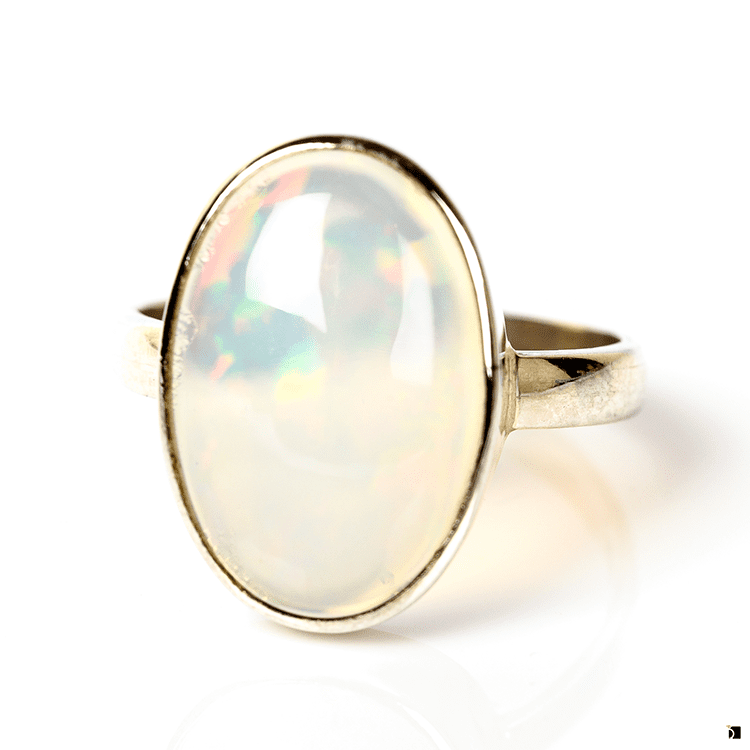

This multi-colored gemstone is best known and valued for its ability to display various hues of the rainbow, a phenomenon termed “play-of-color.” Opals form when silica deposits from water seep into cracks and openings within layers of rock formations. As the water evaporates, it leaves behind silica, which solidifies the compounds of silicon and oxygen. These deposits eventually become what we recognize as opal gemstones, known for their diverse colors.
A single opal gemstone can flash every color of the spectrum.
There are many categories of opals: Black Opal, Semi Black Opal, Boulder Opal, White Opal, Jelly Opal, and Mexican Fire Opal, to name a few. The categories listed below are among the most well-known and are commonly used in jewelry manufacturing:
- Black Opal: This type of opal has a dark grey to black body tone, making it more valuable since the darker tones cause the colors to appear more vibrant.
- Boulder Opal: Characterized by a natural brown ironstone backing attached to the stone, these opals also possess a dark body tone and are considered the second most valuable type of opal.
- White Opal: These opals have a white to light body tone and are generally less valuable since they often lack vibrant colors. When these opals display minimal color, they are sometimes referred to as milky opals.
Here are just a few examples of the amazing colors found in opals:
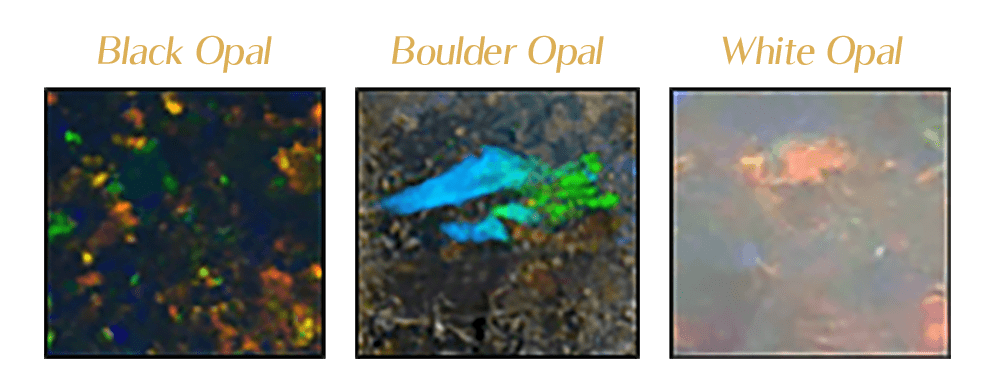

Opal Doublets and Triplets
There are two types of processes that are sometimes used in the manufacturing of opal jewelry:
- Opal Doublets: These consist of two layers adhered together with glue. They have a dark backing, usually made of materials such as black glass, black potch, or brown ironstone, paired with a thin layer of opal. The dark backing enhances the colors in the opal.
- Opal Triplets: These are thinly cut pieces of opal that, like doublets, have a dark backing. However, triplets also feature a clear, often domed, top layer. While this clear layer protects the opal, triplets are generally valued much lower than doublets.
The Rich History and Deep Symbolism of Opal
Cultural Significance and Fun Facts: Opal in Lore and Legend
Let’s delve into the history of Opals! Some of the oldest opal artifacts were discovered in East Africa and are believed to be several thousands of years old. These artifacts, dating back to around 4000 BC, most likely originated from Ethiopia. Over time, opals gained value alongside other esteemed gemstones like diamonds, emeralds, rubies, and sapphires, as they continued to be mined.
The Ancient Romans held opals in high regard as early as 250 BC. These opals were believed to have come from mines in Eastern Europe, which, during those times, were the primary sources for most of the world’s opals.
While opal gemstones can be found globally, Australia has been the epicenter of the opal mining industry since the late 1800s, accounting for at least 90% of the world’s precious opals. Other opal-producing countries include the United States, Mexico, Hungary, Indonesia, Brazil, Peru, Honduras, Guatemala, Nicaragua, Slovakia, Czech Republic, and Ethiopia.
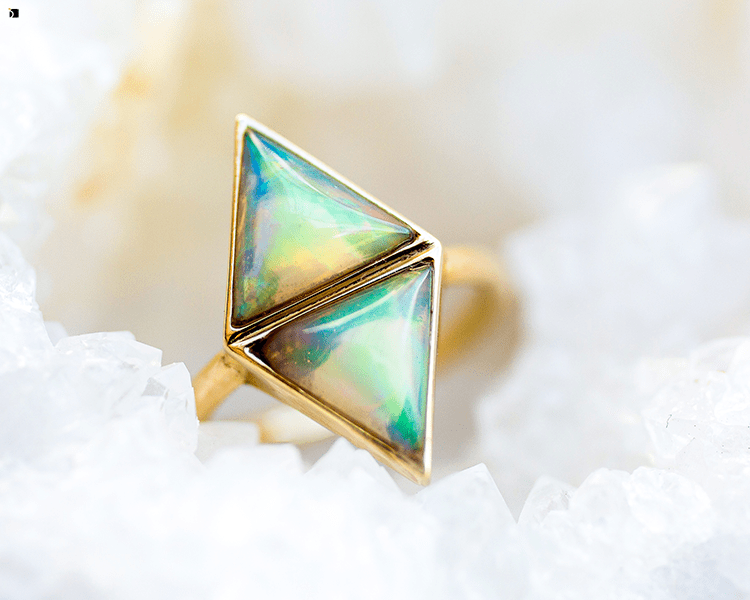

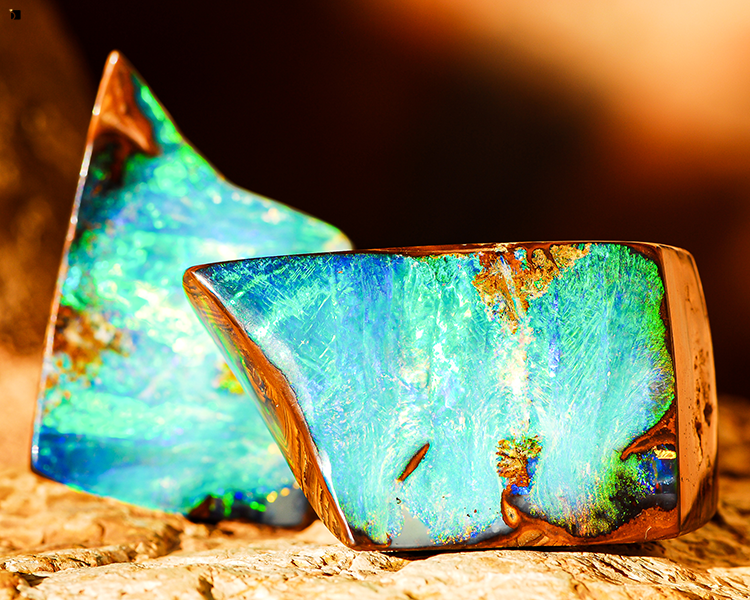

Due to the myriad colors that opal gemstones display, various cultures believed that opals possessed unique powers and brought positive benefits. Generally, opals were seen as symbols of romance, passion, hope, purity, and truth.
- Ancient Romans regarded this stone as a symbol of love, often calling it the “Cupid Stone.” They considered it both precious and powerful.
- Ancient Greeks, on the other hand, believed that the opal bestowed the gift of prophecy, allowing its bearer to see into the future. They also thought it offered protection from diseases.
- Nomadic Arab tribes believed that opals came to Earth through thunderstorms and that they contained lightning within the stone itself.
- In some cultures, the opal’s shimmering array of colors led many to believe that the stone granted the power of invisibility to its wearers and even bolstered eye health.
Buying the Right Opal For You
When selecting the perfect opal, it’s essential to consider the same key factors that apply to other precious gemstones: Color, Clarity, Cut, and Carat. Opals, however, are unique because their value is significantly influenced by their play-of-color—the mesmerizing display of shifting hues that makes opals so distinctive. Besides the Four C’s, the type of opal and its origin are important, as opals are assessed differently from gems like diamonds. While opals come in a wide variety of colors, the most prized opals often showcase a vibrant play-of-color, with the deepest, most vivid flashes of multiple hues being highly coveted.
With the opal being the gemstone associated with 14th wedding anniversaries, this stone of hope and romance is a splendid gift for those celebrating this milestone or an October birthday!


Essential Tips for Maintaining and Caring for Your Opals
Opals register a hardness of about 5.5 to 7.5 on the Mohs scale. This makes them a type of gemstone that requires special handling and cleaning.
For perspective, quartz, which scores between 7 and 7.5 on the Mohs scale, constitutes the particles of dust often seen floating in the air or settling on objects in homes. These particles have the hardness to strip polish from a table or the finish from a car. Diamonds, at a hardness of 10, are the hardest gemstones, while at the softer end of the spectrum is talc—a gemstone so soft that even a fingernail can scratch it. Minerals can only be scratched by substances of greater hardness, so opal jewelry owners should wear their opals with caution.
Your precious gemstones deserve diligent care and maintenance to maintain their sparkle and pristine appearance.
Solid opals should be gently cleaned using mild detergent in warm water, along with a soft toothbrush or cloth. When cleaning your jewelry at home, steer clear of bleach, chemicals, and harsh cleaners. Doublets & triplets can be wiped with a damp soft cloth and mild detergent, but they should never be soaked or fully immersed in liquids. Store your opals separately from other jewelry to prevent scratching, and shield them from high heat. This is crucial as opals have a high water content, and exposure to excessive heat can cause them to crack.
To learn more about our professional gemstone services, such as a professional clean and polish, feel free to check out a Gemstone Services.





Exploring Terrific Tourmalines
Origins & Features of Tourmalines
The modern birthstone for the month of October is Tourmaline.
The name “Tourmaline” derives from the Sinhalese word “turmali” from Sri Lanka, which translates to mixed and unidentified stones of various colors. This gemstone, known for its vast variety, has been called by many names, including “schorl.”


Tourmaline belongs to a group of pyroelectric minerals and boasts the broadest range of colors in the mineral kingdom. The diverse colors of tourmaline gemstones arise from the substitution of transition elements for other metallic elements in its crystal structure. For instance, the pink hue in tourmaline results from the presence of manganese. With sufficient heat, the vibrancy of the stone’s color can change.
When exposed to sufficient electrical charge, usually through heat and pressure, tourmaline can become an oscillating magnet for dust particles.
Tourmaline is considered a “semi-precious” stone, boasting a dazzling array of colors. It can be found in other rocks such as marble and schist. The various colors of tourmaline include schorl (black), elbaite (multi-colored), dravite (brown), liddicoatite (prismatic pink and green), rubellite (pink and red), indicolite (blue), siberite (purple), and watermelon (pink and green), among others. The first four are the most common varieties. The most valuable type of tourmaline is the rare Paraiba tourmaline, which displays a bright neon-blue hue.
The Rich History and Deep Symbolism of Tourmaline
Cultural Significance and Fun Facts: Tourmaline in Lore and Legend
The history of the tourmaline gemstone can be traced back to its initial discovery on the Isle of Elba in the early 18th century. It began to be mined commercially in Australia in the mid-19th century, as the country emerged as a prominent and abundant source of the tourmaline gemstone. Other notable sources of tourmaline include the United States, Central Europe, Indonesia, and Honduras.
It’s believed that the first indication of tourmaline being a pyroelectric stone came in the early 18th century. Children playing with the stone in the sun observed particles of dust and ash being attracted to it. However, it took about a century to conclude that all these pyroelectric gemstones were actually different varieties of the same stone: tourmaline.
Throughout history, tourmaline has often been mistaken for other gemstones, such as rubies and emeralds, due to its vast array of shapes and colors. In fact, one of the rubies in the Russian crown jewels, known as the “Caesar’s Ruby” pendant, is actually a piece of rubellite.
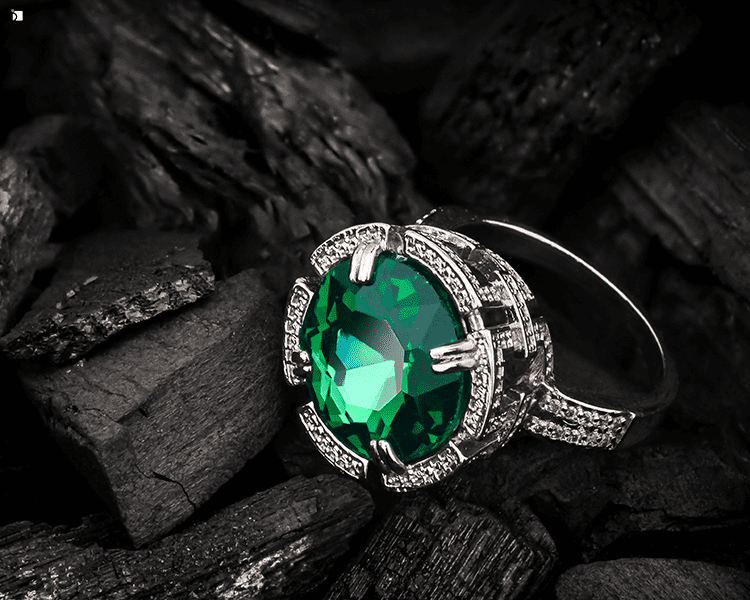

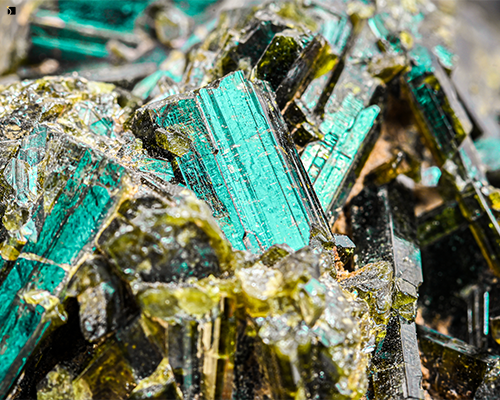

Tourmalines are best known for symbolizing creativity, wisdom, insight, and voice. They are often associated with inspiring artistic expression, boasting a color for every mood and emotion. Specifically, blue tourmalines symbolize calmness, stability, and serenity.
Each color of tourmaline is believed to have its own unique powers and healing properties. For instance, black tourmaline offers protection to the wearer and fosters self-confidence, while green tourmaline promotes stamina, strength, and courage. Pink tourmaline embodies love, compassion, and gentleness.
Buying the Right Tourmaline For You
When choosing the perfect tourmaline, it’s essential to consider the Four C’s: Color, Clarity, Cut, and Carat. Tourmalines are particularly valued for their wide spectrum of colors, ranging from vibrant pinks and greens to deep blues and striking bi-color varieties like watermelon tourmaline. Beyond the Four C’s, the type and origin of the tourmaline also play a role in determining its value, as different locations produce different hues and qualities. While tourmalines come in many colors, the most prized examples, such as the neon-blue Paraiba tourmaline, are highly sought after for their vivid and unique tones.
With tourmaline being the gemstone associated with the 8th wedding anniversary, this stone of creativity and wisdom also makes an excellent gift for those celebrating this milestone, as well as for October birthdays.
Essential Tips for Maintaining and Caring for Your Tourmalines
Tourmalines have a hardness of 7 to 7.5 on the Mohs scale of hardness. This means that tourmaline gemstones are generally harder than most opals. As previously stated, minerals can only be scratched by those of a higher hardness level.
Owners of tourmaline jewelry should store and wear their pieces with caution, as they can still be scratched by many other types of gemstone jewelry. Your precious tourmalines deserve care and maintenance to remain pristine. It’s advisable to keep them away from heat, as it may damage the gemstone. However, these gems are generally resilient to light damage and most chemicals.
For cleaning at home, use warm, soapy water and a toothbrush with soft bristles or a soft cloth, similar to the cleaning method for opals. However, it’s not recommended to clean your tourmaline jewelry with ultrasonic or steam cleaners.
To learn more about our professional cleaning and polishing services, visit our Clean & Polish Services page.
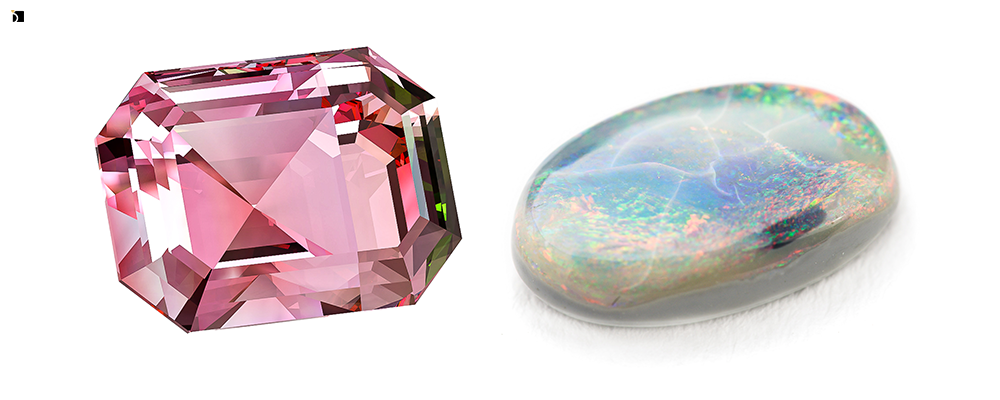






Replacing Your Missing Opal or Tourmaline
Thinking about restoring a loved one’s sentimental birthstone piece? You’re in the right place to restore those precious memories.
Gemstones add life and brilliance to any piece of jewelry, but they also have the highest potential for damage. Whether you have a loose, lost, or scratched Opal or Tourmaline, we take the restoration of your treasures seriously. Any gem, any damage – we’ll make your jewelry sparkle as bright as the day you received it.
Our team of specialists is ready to source every type of gem required for your treasured item. We understand that each of your gemstones is unique and requires specific attention. Our Professional Stone Sourcing team ensures that all of your gems, even those that sometimes go unnoticed, are replaced by stones of the right caliber for your piece.
Visit our Gemstone Replacement Services page to learn more about restoring the brilliance of your Opal or Tourmaline.
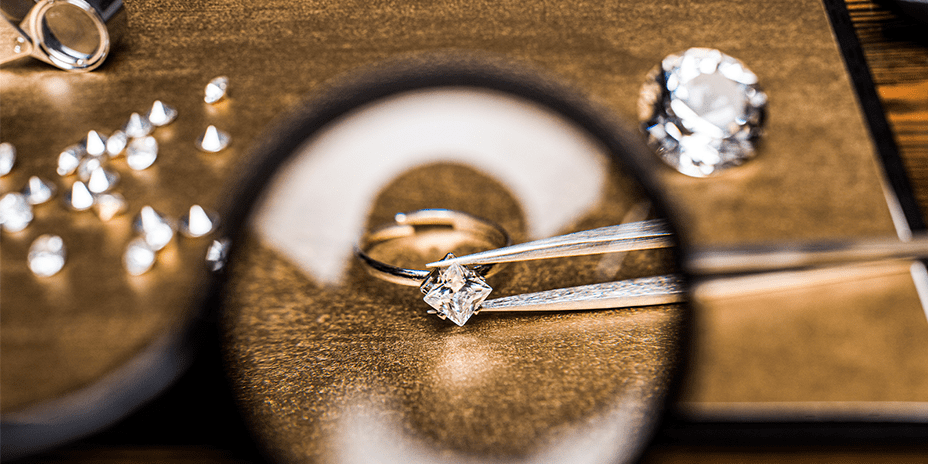

Originally Published October 5, 2022, Updated September 4, 2024





Resources:
- October Birthstone Information: https://www.americangemsociety.org/
- October Birthstone Information: https://www.gia.edu/
- October Birthstone Information: https://www.gemsociety.org/
- Blog outline and revising assisted by AI resources such as Chat-GPT.
Have Questions?
The Ultimate Birthstone Guide
“If you were born in October, your month’s birthstones are Opal and Tourmaline.
If you didn’t already know, there are some months that have multiple birthstones, whereas some only have one. Traditional birthstones are gemstones that were most commonly associated with its respective month in the early 20th century and even beyond, with Ancient Greek and Roman philosophers associating these gemstones with the star signs. Those that are more commonly known in this day and age are the modern birthstones, which were officially named by the Jewelers of America in the 1950’s.
If you would like to learn more about birthstones in general, visit our Ultimate Birthstone Guide!“
Clean & Polish Services
“A basic clean, polish, and inspection is part of the routine care and maintenance needed to keep your jewelry looking like new. The inspection process includes looking for loose stones, bent prongs, and any damage to the metal or stones that need to be repaired.”
Stone Setting Repair
“A stone setting repair can be a simple re-tipping of a worn prong (which is considered routine care and maintenance) or the complete rebuilding/replacing of a damaged prong. In the case of severe damage, the entire head of the ring may need to be replaced.
Regardless of whether or not the prongs are compromised due to normal wear and tear or a result of accidental damage, we can provide the routine care and maintenance in order to ensure you do not lose a stone in your setting.”
Gemstone Replacement Services
“The process of a Gemstone Replacement is simple enough, yet requires trained eyes to be able to make a flawless switch. We aim to leave no trace of our work, which means not only will your setting be perfected, but the gemstone we choose will complete your jewelry piece effortlessly.”
Explore the Magic of Our Gemstone Services!
We are proud members of the


Our team includes gemologists certified by


